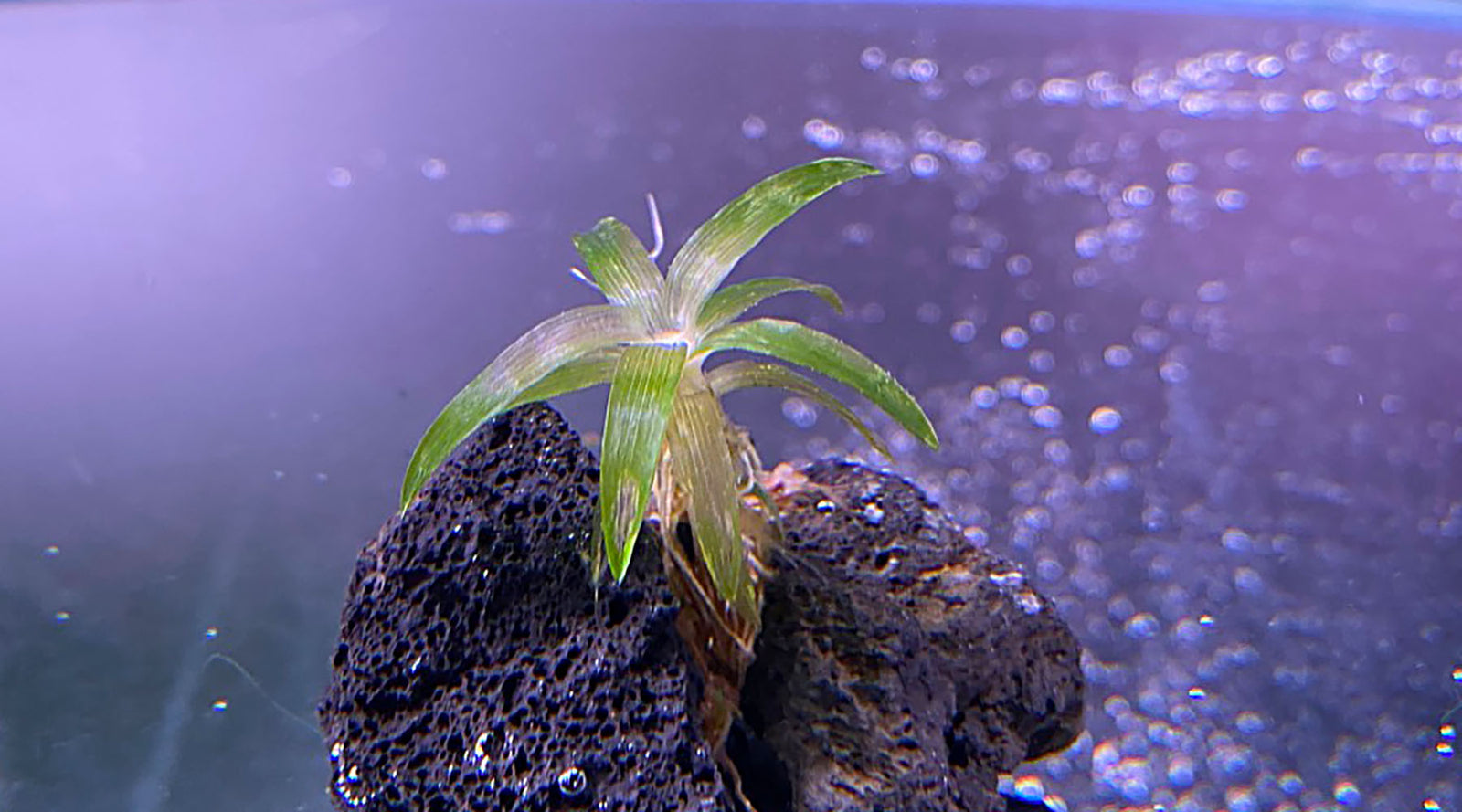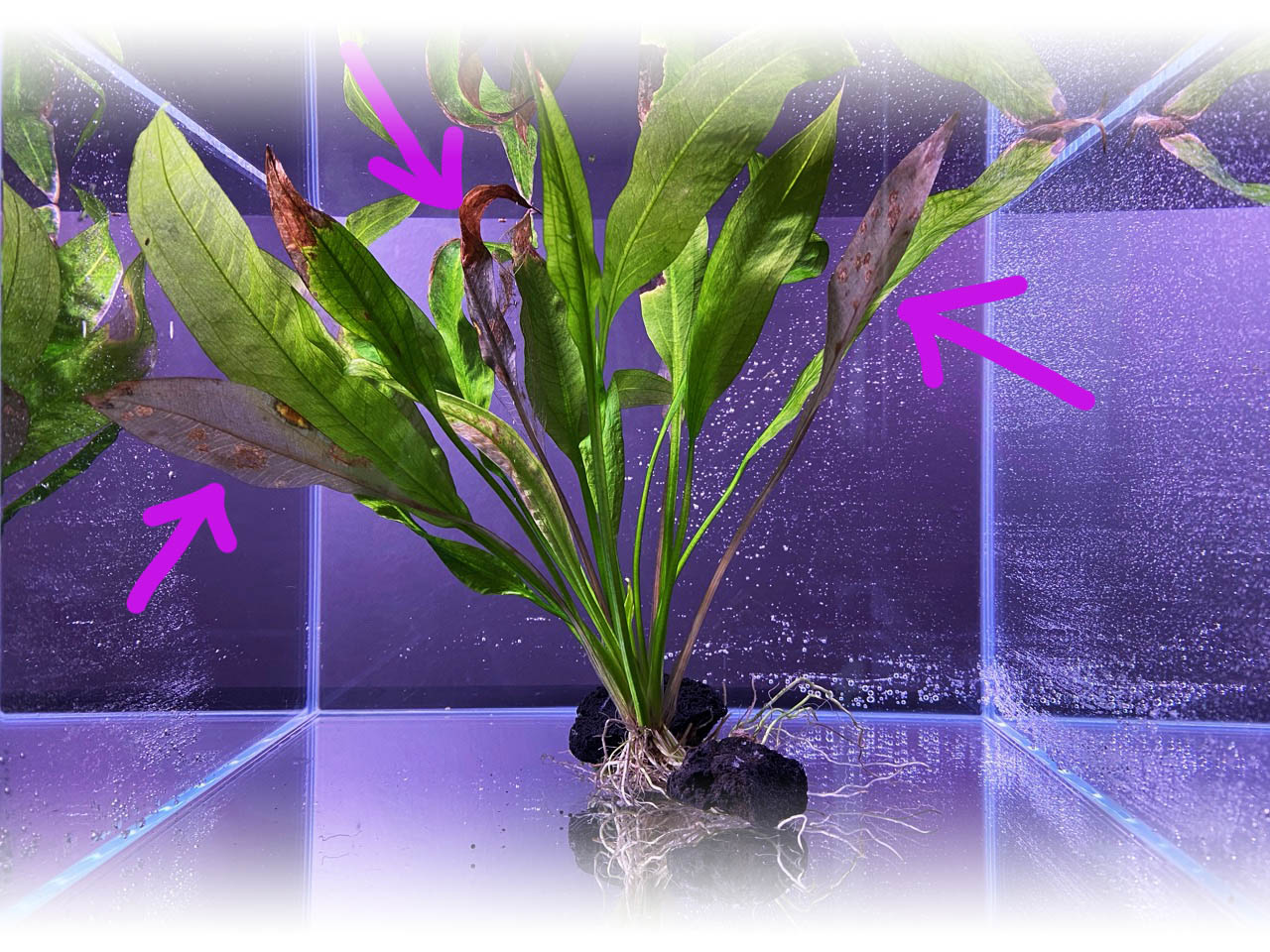
What is ‘melt’?
The Eriocaulon sp. above has a classic case of “plant melt”: its leaves have lost colour and turned slushy and transparent, with the whole plant on the verge of dissolving away. In this example, even the new leaves in the centre have melted, which means it is probably too late to save the plant.
90% of the time, melt happens due to Transition Stress.
It mostly happens in new tanks (or very mature ones).
Think of it as the plant struggling to adapt and scavenging anything it can get from its older leaves, ‘eating itself’ in a way. If it succeeds, new leaves emerge that have adapted. If it fails, the whole plant might dissolve in as quickly as 2 days.
In newly planted tanks, this may happen because of a number of reasons:
Weak stock
Plants from different shops may look the same, but can vary a lot in health. It is the same reason serious dog owners prefer to get a puppy from a trusted breeder. A plant that was grown, transported and stored in good conditions has more stored energy that allows it to adapt to a new tank more easily.
Emersed to Submerged
Most aquatic plants are farmed emersed (with leaves above water) as plants grow more easily with better access to light / CO2 that way. After being planted in a new tank, they have to adapt to submerged conditions. For many plants, this involves shedding all their emersed-grown leaves. In a tank without injected CO2, this change from emersed to submerged is extreme: available CO2 drops from around 400ppm (parts per million) in air to about 3ppm in water. As ~50% of plant mass is carbon, this is a really big deal. If, for you CO2 injection feels unnatural, read more about this topic here.
Cycling / Ammonia
In a newly set up tank (with a nutrient-rich aquasoil), the level of ammonia can be high enough to melt plants unless properly cycled. Uses of ADA Amazonia (in the past) used to experience plant melt as a rule, unless the soil was cycled for at least 2 to 3 weeks prior to planting.
In the picture above, we see slow and natural deterioration, not melt. As a general rule, damaged leaves do not heal, unlike say our skin. Plants channel their energy towards growing new leaves instead.
In a mature tank, plant melt can occur due to slowly deteriorating levels of nutrition: clogged CO2 diffuser, reduced flow from a filter that has not been cleaned for many months, depleted soil without regular fertilisation.
The outward melt may happen suddenly, but the underlying weakness probably developed over months, before reaching a tipping point.
7 pathways to avoid melt:
Buy healthy plants: they generally feel firm, with bright white (vs yellow) roots. Leaves should feel sturdy rather than soft.
Use a properly sized filter to provide good flow- this increases both oxygen and carbon dioxide levels, especially in tanks without injected CO2.
If using injected CO2, tune up the levels when adding new plants. This basically makes more food available to plants and helps them in their transition.
Change water the 2Hr way, which involves siphoning the detritus from the substrate. This removes the #1 algae trigger, and reduces the competition to oxygen, carbon dioxide and nutrition.
Lower the temperature (to around 22/23 Celsius). This slows down metabolism and reduces the demand for oxygen and carbon dioxide during the transition to the new tank.
Plant in smaller, less-crowded bunches. This allows better water flow around individual plants, less over crowding and better access to light.
Provide a comprehensive fertiliser. New plants have undeveloped root systems and cannot feed from the substrate. But they can still draw nutrients directly out of the water. Folks that hold off dosing in new tanks are not helping their plants acclimatise. Dosing should start from day 1.
Above: It is also common for new tanks to have diatoms, which is the brown stuff on the edges of the leaves and the brown ‘cotton wool’ mass on the substrate. It is sometimes confused with with plant melt. Diatoms generally disappear naturally after the tank gains biological maturity.

